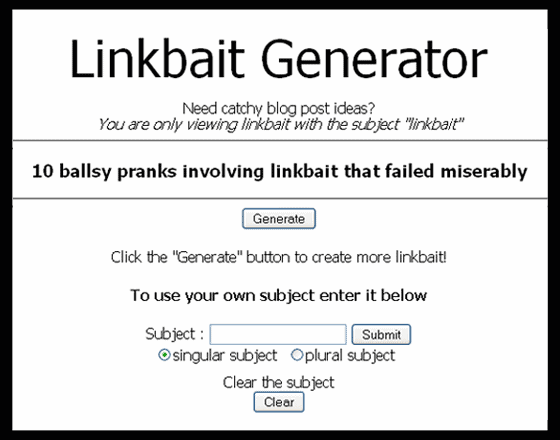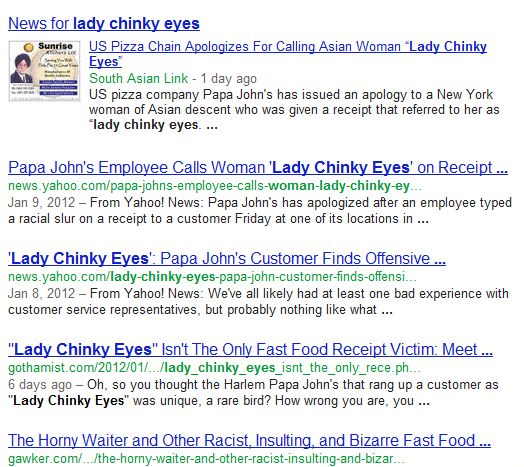
A blog post’s title can make or break the success of an article. Bloggers strive to create attention-grabbing, irresistible headlines that result in full reads, improved conversions and social sharing. Writing great titles isn’t always easy, however, and it’s crucial to meet quality expectations within the rest of the copy.
Openability
Often, readers are exposed to an article’s title in search results or on social networks, so they must click on a title to read the entire piece. Copyblogger notes that titles follow the 80/20 rule:
Eight of ten people will read a title, but just two of ten readers will continue reading the article.

Exceptional titles have better results. More importantly, some titles are so intriguing that readers may share them with their networks, without actually reading the article themselves.
There are a few different approaches that lead to improved open rates:
- Eight words or less. Titles of eight words or less are the generally accepted standard and have been found to be the most effective. Twitter limits posts to 140 characters, and re-tweets add to the overall length of a tweet. Therefore, shorter titles are better suited for social sharing.
- Clarity. Blog post titles should clearly convey what the article is about, leaving no ambiguity for readers.
- Problem solvers. If a post is aimed at a specific reader population and solves a common problem, titles that communicate this benefit are very effective.
- Sensationalism and big claims. HubSpot.com says off-the-wall, wacky titles pique readers’ curiosity, leading to increased open rates.
- Incorporating target keywords. Keywords are important in titles for two reasons. First, post titles are typically used to form URLs and can have a big impact on search engine rankings. Second, web searchers often make a broad scan of content and are more likely to click on titles containing pertinent keywords.
- Using catchy phrases. BrickMarketing.com points out a few noteworthy catch phrases that entice readers to click. “How To,” “Top 10 Ways To,” “Tips For,” and “Top 5 Resources For” are good examples.
- Create controversy. People are drawn to drama. Blog post titles that trigger an emotional response or touch on a controversial topic are likely to intrigue visitors to read further.
Backing up title claims
Attention-grabbing, sensational titles improve open rates, there’s no doubt about that. But bloggers should also heed the content of the article when crafting titles. A sensational title promising a benefit should follow through, or the writer risks alienating his audience. Relevance plays a crucial role in long-term success, so bloggers should keep the following in mind when crafting titles.
- Back up claims. Writers should avoid making promises not fulfilled in the full article.
- Provide valuable, quality content. Poorly-written content can quickly cause readers to bounce and hurt a blogger’s reputation.
- Avoid keyword stuffing. Keywords are important for search engine optimization, and writers should incorporate relevant keywords into titles when possible. But keywords that don’t flow naturally with the title turn both readers and search engines off.
Blog title examples: the good, the bad, and the ugly
The good: “Top 10 Ways to Improve Click-Through Rates”
The bad: “Google AdWords Click-Through Rates”
Why: The second title is vague, uninteresting and doesn’t offer readers a benefit. The first title, however, uses a catch phrase and promises readers will learn something useful.
Warning: This example contains a horrible racial slur and is only included to support the notion of controversy (and how a brand can do themselves a lot of damage), and does not in any way reflect the opinions of Unbounce.
The good: “Papa Johns Fail: ‘Lady Chinky Eyes’ Goes Viral”
The bad: “Papa Johns Employee Offends Customer”
Why: The second title is bland and boring, and while some readers will click through to the full article, most will pass it by. The first example, on the other hand, uses sensationalism to invoke curiosity. Most readers encountering this title will be intrigued by the racial reference and curious to learn the rest of the story.

The good: “Mobile Health Tech Tops CES 2012 Trends”
The bad: “CES 2012 Features New Tech Gadgets for Health and Fitness Management”
Why: The second title is too long and likely to get cut off on certain social networks. Furthermore, the first title is more concise and incorporates keywords naturally.
Even the greatest, most informative blog articles can have lackluster results if the title fails to draw readers in. On the other hand, titles that promise outlandish content or outrageous benefits not fulfilled in the copy can quickly send the most dedicated readers packing.
Crafting blog titles should never be treated as an afterthought, because an article’s title plays an integral role in the success of a post and the impact it has on readers.
